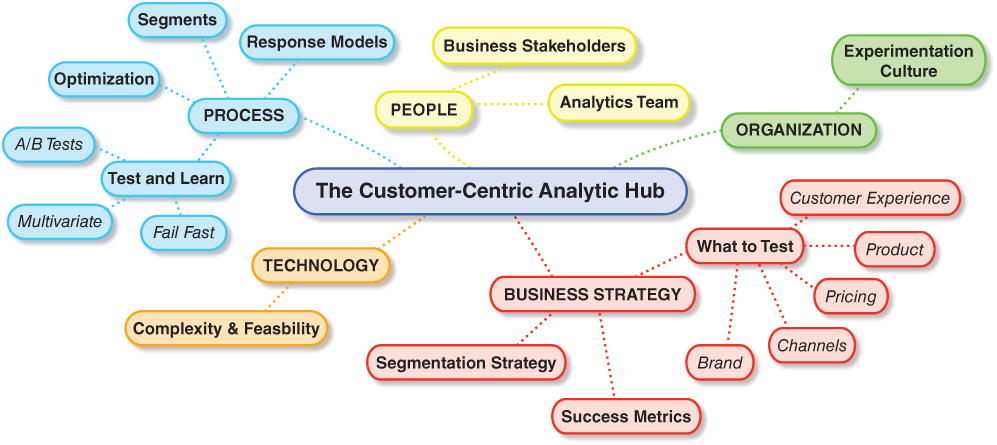Chapter 18Building Agility into Test-and-Learn Strategies
Once your predictive models are created and your treatment strategies defined, it's time to create your test-and-learn strategy. Just because you can predict that an event is likely to occur, your ability to influence that event is unknown. Test-and-learn approaches are important in helping to understand which treatments and tactics will be most effective in influencing outcomes across your segments. Think of test-and-learn as a disciplined way to experiment and innovate: The faster you can speed up your experimentation cycles, the more quickly you'll be able to adapt and respond. While we won't be able to do justice to this important topic in one chapter, we'll provide an overview of things to consider in your predictive modeling project (see Figure 18.1).

Figure 18.1 Agility Test and Learn Considerations
What Is Test-and-Learn?
Test-and-learn strategies have been prevalent in marketing organizations for decades and have been expanded more broadly into other areas of the business, such as pricing or product development. Just like with our product backlog, a typical test-and-learn cycle starts with a hypothesis. But in this case, our hypotheses center around different ideas we have for influencing our customers' behavior: For example, you might believe that customers will respond to a certain offer or message over ...
Get Agile by Design now with the O’Reilly learning platform.
O’Reilly members experience books, live events, courses curated by job role, and more from O’Reilly and nearly 200 top publishers.

